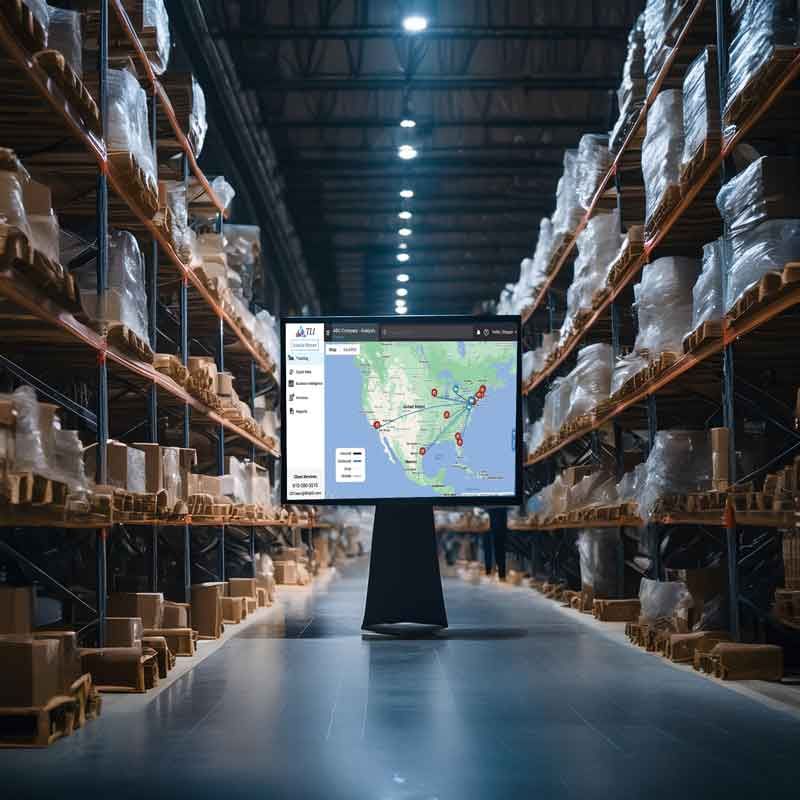Just-in-Time (JIT) Logistics Strategy
Just-in-Time (JIT)
Just-in-Time (JIT) refers to a logistics strategy that delivers goods precisely when needed, not too early or too late. This approach reduces the costs associated with storing inventory. It improves efficiency and cash flow by better managing supply chains. Companies utilize the JIT strategy to streamline their operations and minimize waste.
The JIT system coordinates the flow of materials from suppliers directly to production. Receiving components right before use eliminates the need for large warehouses full of inventory waiting to be processed. This lean manufacturing method depends on accurate forecasting of demand to schedule deliveries accordingly.
Implementing JIT requires close collaboration between vendors and your freight broker managing the shipper's supply chain. Suppliers must provide materials reliably and on time to prevent production delays. Manufacturers must carefully schedule operations and communicate real-time needs. Carriers must transport goods efficiently to arrive exactly when required.
By eliminating excess inventory, JIT strategies free up working capital that would otherwise sit on shelves. It motivates producing only what customers want when they want it. This responsiveness to demand minimizes overproduction waste. Overall, the JIT approach aims to create a smooth, streamlined system with minimal redundancies.

Just in Time (JIT) Inventory Management
The Just-in-Time (JIT) inventory strategy is a method that reduces costs and eliminates excess inventory by receiving raw materials only as needed for the production process. This lean approach improves efficiency by ensuring a smooth flow from suppliers directly to the production line. JIT inventory management relies on precise timing and coordination across the supply chain to avoid shortages that could halt operations.
By maintaining minimal stock levels, the JIT method minimizes storage space requirements and associated inventory costs like rental fees and insurance. It frees up cash flow that would otherwise be tied up in surplus materials sitting idle. JIT motivates making only what customers want right now, reducing waste from overproduction. Receiving high-quality components on-demand results in a highly responsive system.
Benefits of JIT Shipping Processes
Effective JIT inventory management requires an integrated Transportation Management System to reliably deliver goods exactly when needed. Strong supplier relationships and flexibility are critical for adapting to fluctuating demand. Open communication between parties coordinates the movement of materials to eliminate delays. An optimized organization with streamlined workflows enables quick changeovers on the production floor.
While the benefits of JIT inventory management are considerable, the just in time strategy demands rigorous oversight. Precisely timed arrivals leave no room for errors that could disrupt the entire production process. Contingency plans like emergency LTL & courier services may be needed to prevent line stoppages from derailing just-in-time schedules. But for companies able to master the approach, JIT unlocks significant cost savings and competitive advantages.
Problems when using Just-in-Time Shipping Strategies
Not leveraging a TMS can severely hinder just-in-time inventory management. A TMS provides full visibility into shipment movements and expected arrival times. Without this mission-critical tool, manufacturers are left in the dark about inbound raw material deliveries. Delays go undetected until too late, disrupting production schedules. A TMS allows proactive notification of issues and re-routing to meet cut times. It optimizes routes and modes for maximum efficiency. Flying blind without a TMS makes maintaining the precise timing and coordination required for JIT nearly impossible.
Vendor management is another potential pitfall. JIT relies on suppliers delivering flawless quality components consistently on-time. Poor vendor relationships increase risk. Lack of communication and misaligned expectations frequently lead to missed deadlines. Manufacturers must take an active partnership approach - providing forecasting data, collaborating on logistics, and holding vendors accountable to delivery windows. Weak oversight allows recurring supply issues that jeopardize JIT's seamless material flows.
Transportation pricing represents a prime area for cost savings and efficiency gains. Most companies independently source rates for separate inbound material shipments and outbound finished goods. This disconnected approach misses opportunities for leveraged pricing through freight consolidation. By combining inbound, outbound, and inter-facility volumes, shippers gain negotiating power for discounted contractual rates. Furthermore, optimizing routing guides for each plant and distribution point eliminates overspending. Leaving these freight spends siloed results in excess transportation costs that erode JIT advantages.
TLI Insights
Get the latest logistics insights and tips from TLI's award-winning team. Stay ahead in transportation planning.
Questions? Email us at marketing@shiptli.com



